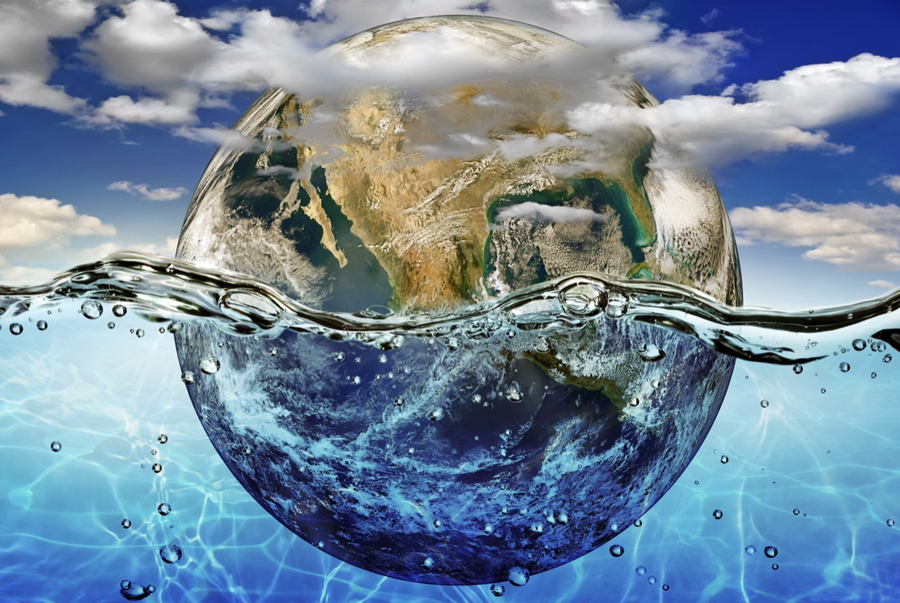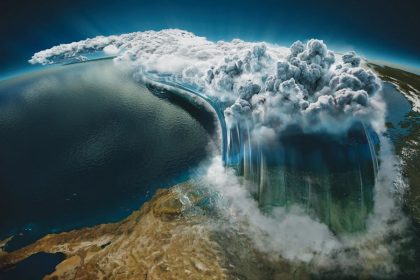Hi readers!
Do you know how the Earth’s atmosphere evolved and the role it has been playing since its evolution? If No, let’s talk about it.
The atmosphere of Planet Earth has evolved slowly over some four and a half billion years. Mesosphere: the third in Earth’s history, also called third atmosphere is a gas and aerosol envelope extending out from land, ocean, and ice toward outer space. It is most dense near the surface of the Earth, where gravity pulls gases and microscopic particles of dust, smoke, and chemicals inward to settle on the surface, where they are absorbed by Earth’s inhabitants. These inhabitants are protected by the creation and maintenance of pressure that allows water to exist in each of its three phases: solid, liquid, and gas.
All these factors contribute to climate regulation through absorption and retention of solar radiation required for warming of the planet’s surface
The atmosphere also contains variable amounts of water vapors with an estimated volume of about 37.5 million-billion gallons which move into the atmosphere either through evaporation or through transpiration.
When the water vapors move up, they meet aerosols (with hygroscopic properties) containing variable amounts of minerals that can differentially interact with water thereby changing its taste, color and even odor thus, leaving the water impure.
However, in a balanced air, these aerosols particles pull water vapors to form the foundations of cloud droplets (dew). When such droplets grows in volume, weight, and height, they become a cloud and fall back along with its minerals down toward the surface of the Earth as rain. The earth is thus replenished.
These clouds droplets assist the distribution of Sun’s energy while storms push and pull this energy from the equator to the poles and back which is a straightforward process. But this process becomes increasingly complicated when heat, evaporation, turbulence, radiation, wind, geography, and other factors come into play. The science of clouds therefore requires an understanding of the entire atmosphere, including all of its dynamics, the forces that are at work including everything which is outside the clouds or is directed toward outside or periphery. Nevertheless.
This fact has not been considered and hence, is one of the reasons that, climate change predictions and/or models are not proving adequate because of the inadequate representation of clouds in the processes.
The movement of clouds around the planet can be observed through Afternoon Train or A-Train: an assembly of satellites that travel one behind the other along the same track as they orbit Earth. Not only the movement of clouds around the Earth but their vertical structure can also be observed which help inspect the clouds from inside.
China has done it and is already using it in her iconic project, “The Sky River project”.
In the troposphere, water vapor also exists in the form of filamentary structures that are constantly fluctuating as if they had the characteristics of rivers that flow on land. In 1992, scientists from MIT and NASA Goddard Space Flight Center proposed the name “tropospheric rivers” for these filaments whose lengths is several folds more than their widths, persisting many days while being interpreted through the atmosphere.
Newell and Zhu (Atmospheric rivers and bombs: in Environmental Sciences, 1994) established,
“that these filamentary structures (tropospheric rivers) are, in fact, responsible for the transport of almost all the water vapors in the atmosphere despite discharging a third of the water they carry either as rain or snowfall (remaining three fourth water they retain). These structures, which originate in the tropical and subtropical region and travel pole wards, represent such a features of global atmospheric circulation that evidence of their presence can be observed in ice cores from Greenland and Antarctica.
A new concept of atmospheric water was thus proposed between 2016 and 2018 by scientists from Tsinghua and Qinghai Universities by naming:
Blue water: found in rivers, lakes, underground aquifers, and other sources that can be used by humans directly. (Pl, see the below mentioned picture to see how blue water look like).
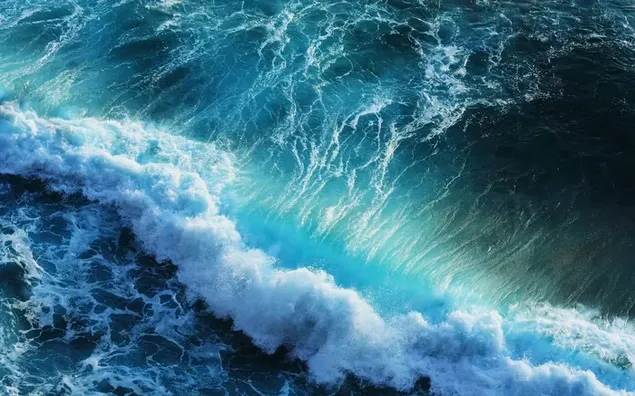
Green water is the one that directly evaporates from the land surface and transpires from the vegetation. This water is not green purse but since it transpire from green vegetation or evaporates from the land surface, partly covered by vegetation hence, it is symbolically named “Green” water. This evaporated or transpired water interact with aerosol particles in the upper atmosphere which can change its taste, color and odor thus, leaving the water impure (See picture how green water look).

Please be clear that specific green look of the water indicates that phytoplankton (microscopic algae) are growing near its surface which get energy from the sun, and absorb light in blue and red wavelengths, because of the presence of Chlorophyll a. The more phytoplankton in the water, the more will be the shift in color of water toward the green part of the spectrum. For example, in regions with high concentrations of phytoplankton, the ocean will appear in shades ranging from blue green to green because chlorophyll absorbs red and blue and reflects green light depending upon the type and density of the phytoplankton.
Oceans also looks blue because water absorbs colors in the red part of the light leaving behind the blue part of the spectrum for us to see. The ocean may also take on green, red, or other hues as light bounces off of floating sediments and particles in the water. Most of the ocean, however, is completely dark. Hardly any light penetrates deeper than 656 feet, and no light penetrates deeper than 3,280 feet.
Whitewater forms in a speedy context, particularly, when a river’s slope changes to the extent that can generate turmoil or uproar in the river to facilitate the air to be trapped within the water. This trapped air form an unstable current that convert into or look like a foam or bubble making the water appear opaque and white (See the picture).
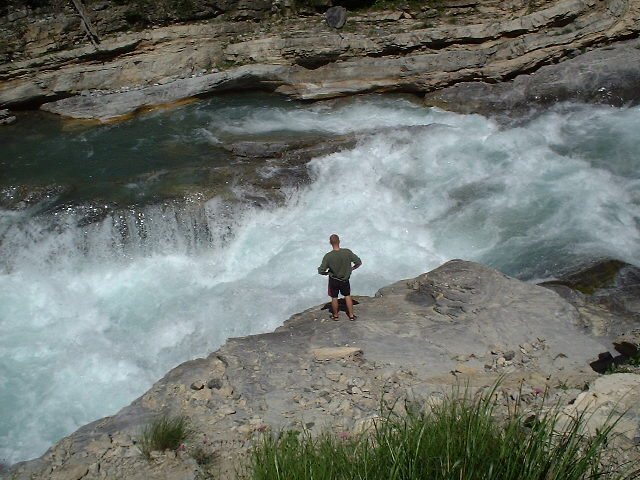
White water
In the atmosphere, however, white water exists when and where moisture with a high potential to precipitate moves into “discontinuities or gaps in the atmospheric flow which varies from year to year. The discontinuity (if any) occurs due to changes in temperature, humidity and velocity which immediately filled with white water that integrate into such gaps thereby creating special boundary layers by air masses characterized by different gradients of temperature, velocity, pressure, or humidity at the time of meeting each other in the troposphere. The boundary layer is a thin zone of calm air that surrounds each entry point. The thickness of the boundary layer effects the speed at which gases and energy are exchanged between the atmospheric flow and the integrating white water. A thick boundary layer can reduce the transfer of water vapor from the Atmospheric River (integrated into the atmospheric flow) to the environment.
The engineers and scientists named these “discontinuities” as sky rivers or specific bodies of tropospheric water filaments and the accompanied boundary layers that support identifiable spatial and temporal dimensions. White water in not polluted and is therefore, the purest.
The importance and significance of this feature is that in the atmosphere, the transboundary hydro-geo-logic (physical features that control direction of groundwater flow system) prohibit the flow control based on surfaces, routes, and boundaries rather, it is on the logic of the flows and routes, which is determined by the boundary layers when and where they are formed by the integration of Atmospheric River into atmospheric flow because,
it is the atmosphere that produces multiple zones of climate crises on the ground and sites of their attribution can be imagined
Since Atmospheric Rivers are responsible for transporting all the water vapors in the atmosphere but discharge only one third of the water they carry and retain the rest of the three fourth water: a reality that probably has provoked China to initiate “Sky River Project,”
“with the aim to transfer more water from Yangtze to Yellow river at their points of origin using “water vapor transported by Atmosphere River” supported by cloud seeding and the satellite network”.
Another driver for this venture is the poetic phrase “Do you not see the Yellow River come from the sky”? an idea given by “Li Bai” (of Tang Dynasty) who utter this in 752 AD. The current “sky river project” is today’s practical manifestation of that “powerful idea”.
Although no photographic system was available at that time, hence the idea was conveyed by drawing the lines on the earth with some stones or sticks of threes, yet the message was not only conveyed but was also taken up and kept moving as per facilities and technology allowed Chinese to move. In my imagination, the idea that Li Bai has conceived must have been looked like what is shown in the below mentioned picture. This is Qinghai lake showing clouds (Atmospheric Rivers) coming from the top of the mountain and landing directly in the lake
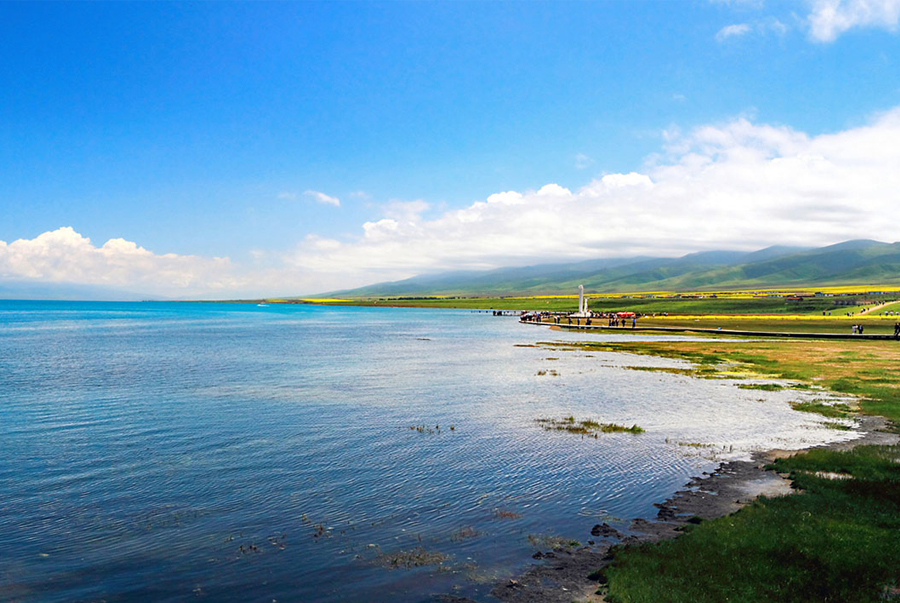
Qinghai lake
The success of Sky River Project would add 5 billion cubic meters rainwater year1 into the Yellow River to keep it flowing in the times ahead. The massive project aims at producing rainfall over an area of > 1.6 million square kilometers (620,000 square miles), or roughly 12 times the size of England.
That’s all for now dear readers.
See you next week,
Take care, Bye.


